There are a few thing that can run directly off of AC power like incandescent light bulbs and and electric motors but it stops there. Most electronics need power converted to DC before it can be applied to a circuit. Is there a fundamental reason why logic circuits that use AC power directly haven't been developed or is it just a lack of ingenuity?
4 Answers
In engineering, we try to solve a problem in the best way. Best is a mixture of cheap, fast, simple, reliable, etc. and the best choice may shift over time.
Circuits that work directly on AC power might be possble, but so far they are not as good as DC circuits, so for an overall system it is much better to make the AC into DC (at the cost of some extra circuitry) and use DC powered circuits, than to use AC powered circuits. For some very simple circuits like relays, heaters, mains-synchronous motors, lamps, etc. AC is often used directly.
One quite fundamental problem in AC power is that there are periodic moments where the voltage is zero. It is quite difficult to design a circuit that operates well at 0V. Remembering a state (1 or 0) through a period of zero power is also difficult.
- 48,407
- 1
- 63
- 136
All semiconductor devices (transistors, LEDs, ICs) are inherently polarised: they're not symmetrical and will generally only work with a particular voltage direction. They generally have fairly narrow minimum and maximum voltage ranges, so they won't even work with uneven DC. These properties arise from fundamental physics.
The same applies for "cathode ray" based devices, including thermionic valves and vacuum fluorescent displays.
(Is this a duplicate of Why do electronic circuits need their power supply to be DC, or rectified AC? )
- 46,540
- 4
- 64
- 126
-
1To me this sounds like a chicken and the egg type problem. Yes, all semiconductor devices are inherently polarized but they were also developed under the assumption that they would work with DC. My question is more if its even possible to make semiconductor components that operate with AC or if polarization is always inherent. – cspirou Jul 20 '15 at 09:48
-
2It's inherent in the physics of a P-N junction that it behaves differently with different directions of voltage field applied. While you *can* make e.g. symmetrical bipolar transistors, they are made asymmetrical to improve efficiency: https://electronics.stackexchange.com/questions/29756/bjt-in-reverse-active-mode-of-operation . You can't make a symmetrical LED though. Even if you did have symmetrical components, you'd be constrained to symmetrical *circuit topology*, which makes a lot of things harder or impossible. – pjc50 Jul 20 '15 at 10:17
-
Adiabatic logic uses an AC supply (which also serves as the clock). By shuffling the electrons up and down on alternating cycles, it doesn't destroy any bits and therefore uses (almost) zero energy. :D – endolith Jul 25 '16 at 19:32
I challenge you with a different perspective: what's the problem here? To make things work you need to provide power (i.e. energy at a continuous rate) to them.
Theoretically speaking, DC is the simplest waveform you can think of (constant voltage or current) so it is the simplest way you can deliver power to a circuit. In fact you should ask "Why do some circuits use AC?" instead!
BTW, one example you make is misleading: a light bulb doesn't need AC, assuming you're talking about incandescent bulbs. The same bulb can be plugged into a DC generator with a value equal to the RMS AC value and will work the same! Newer light bulbs, those having an electronic circuit inside, perform an AC/DC conversion inside.
Unfortunately, it turns out that producing high quantity of DC power is not so simple, whereas sinusoidal AC is relatively simple to produce in high quantities using alternators (megawatts of power are common!).
DC is simple and it can be easily exploited by circuits to do what they want. For example, a transistor amplifier "modulates" the DC power rail constant voltage using the signal to amplify as a "modulating" signal, thus producing a replica of the signal, but with an bigger amplitude. Doing the same using an AC power rail as a starting point would be extremely more complicated.
Think of this analogy: imagine you want to use the power from a water stream to make some machine work (a water mill, for example). What would you prefer? A steady, continuous stream of water or a capricious stream that periodically turns off or reverse its direction? Maybe you can device a smart way to exploit the capricious stream, but the steady stream is much more simple to understand and to exploit!
- 24,350
- 5
- 62
- 107
-
1The water stream analogy is good: it really shows that a big part of the reason we design these systems to operate on DC is simply that it's easier for us to design them that way. – David Cian Mar 05 '23 at 22:15
lets first talk about the difference between AC and DC, :
Electricity flows in two ways: either in an alternating current (AC) or in a direct current (DC). Electricity or "current" is nothing but the movement of electrons through a conductor, like a wire. The difference between AC and DC lies in the direction in which the electrons flow. In DC, the electrons flow steadily in a single direction, or "forward." In AC, electrons keep switching directions, sometimes going "forward" and then going "backward."
lets take the light bulb as an example, and see why it works using AC or DC current,
As we mentioned in case of AC, the current is going forward and then going backward again ( as in sinusoidal wave )
The change in direction of the current flow happens so fast that the light bulb does not have a chance to stop glowing. The light bulb does not care if it is using DC or AC current as long as the electrons are moving


as the pictures show, the electrons are moving forward and backward and the is why the light bulb still working
so to sum it up, in similar cases the AC current works with these devices
lets talk about the logic circuits, which needs 0 or 1 logic
in the case of DC its easy to have 0 represented by 0 volt and 1 represented by 5 volt or 3.3 volt
but in the case of AC , the value of the voltage is changing from positive to negative, the voltage starts with 0 volt and then goes to the maximum voltage and then to 0 volt back again and then it starts the negative cycle , we see the voltage is changing according to the frequency and you cant relay on them to provide you with two different states like 0 or 1 !

what if ! what if you want to have some kind of mechanism like the RMS voltage or the maximum voltage to provide two seperate states for logic circuits, for example when the RMS of the AC is 5 volt ( for example ) the logic is 1 and if the RMS of the AC is 0 volt the state is 0, its possible ! but to calculate the RMS it self you need many values for at least one cycle to calculate the RMS which is not practical comparing to DC
- 470
- 5
- 20